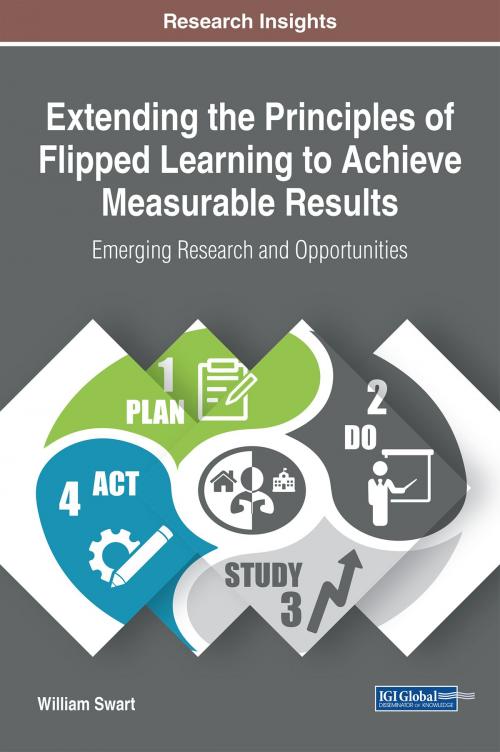Extending the Principles of Flipped Learning to Achieve Measurable Results
Emerging Research and Opportunities
Nonfiction, Reference & Language, Education & Teaching, Special Education, Experimental Methods, Educational Theory, Testing & Measurement| Author: | William Swart | ISBN: | 9781522529866 |
| Publisher: | IGI Global | Publication: | July 13, 2017 |
| Imprint: | Information Science Reference | Language: | English |
| Author: | William Swart |
| ISBN: | 9781522529866 |
| Publisher: | IGI Global |
| Publication: | July 13, 2017 |
| Imprint: | Information Science Reference |
| Language: | English |
The delivery of educational content can take a variety of forms, depending on the dynamics of a particular classroom. With flipped classroom environments, students can better engage and retain concepts and information. Extending the Principles of Flipped Learning to Achieve Measurable Results: Emerging Research and Opportunities shows through detailed case studies how to measure flipped learning results in order to implement Deming’s P-D-S-A cycle for achieving continual improvement in the flipped classroom. The book is built upon Dr. Michael G. Moore’s theory of Transactional Distance. It highlights pedagogical coverage on topics such as individual and group interactive learning, learning spaces, learning materials, and instructor and student preparation. This book is an ideal reference source for educators, professionals, graduate students, researchers, and academics seeking information on the latest instructional strategies.
The delivery of educational content can take a variety of forms, depending on the dynamics of a particular classroom. With flipped classroom environments, students can better engage and retain concepts and information. Extending the Principles of Flipped Learning to Achieve Measurable Results: Emerging Research and Opportunities shows through detailed case studies how to measure flipped learning results in order to implement Deming’s P-D-S-A cycle for achieving continual improvement in the flipped classroom. The book is built upon Dr. Michael G. Moore’s theory of Transactional Distance. It highlights pedagogical coverage on topics such as individual and group interactive learning, learning spaces, learning materials, and instructor and student preparation. This book is an ideal reference source for educators, professionals, graduate students, researchers, and academics seeking information on the latest instructional strategies.















